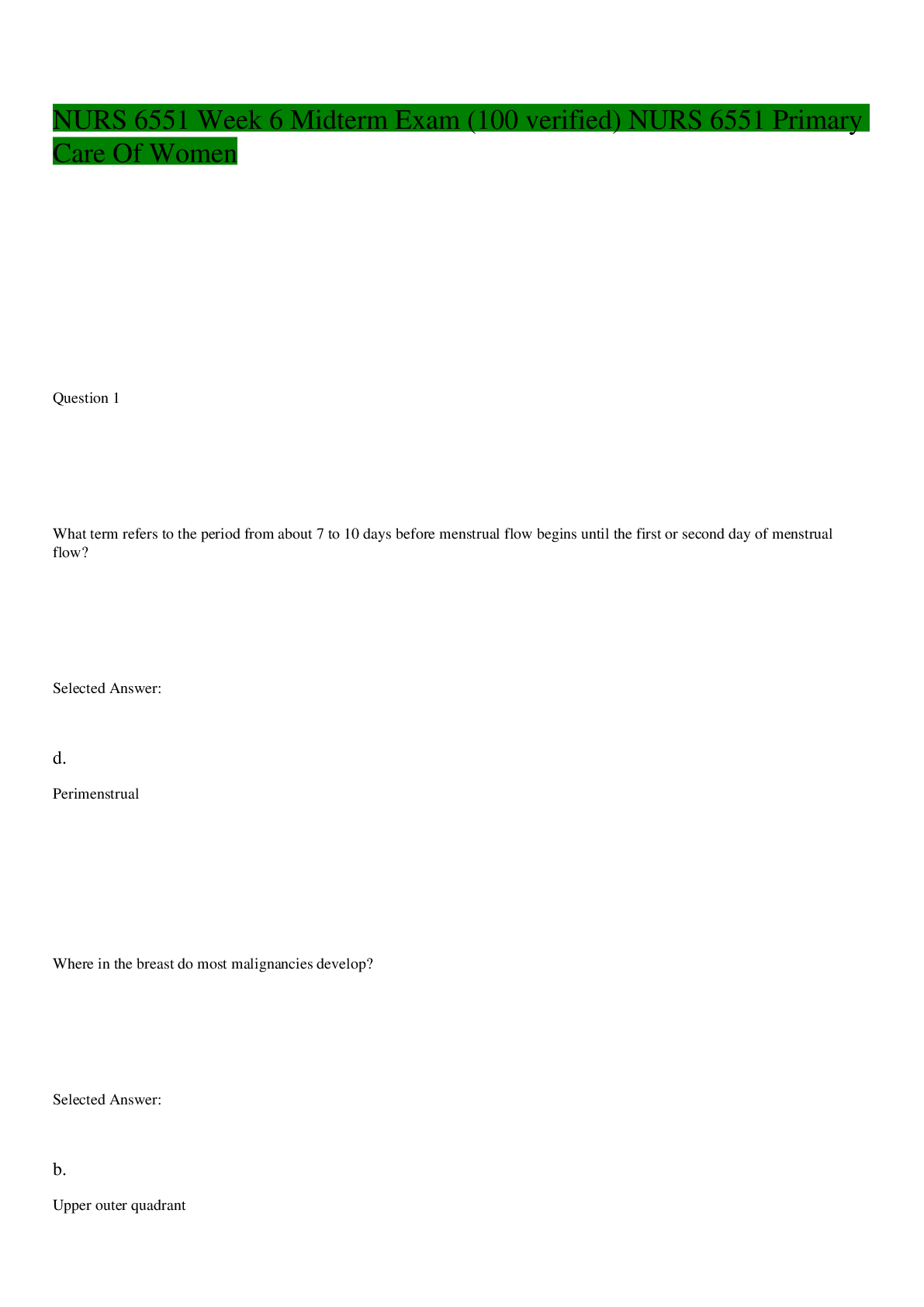*NURSING > QUESTIONS & ANSWERS > NURS 6640/ NURS6640-9 PSYCHOTHERAPY INDIVID. FALL QUARTER 2020 WEEK 6 MIDTERM EXAM WITH VERIFIED ANS (All)
NURS 6640/ NURS6640-9 PSYCHOTHERAPY INDIVID. FALL QUARTER 2020 WEEK 6 MIDTERM EXAM WITH VERIFIED ANSWERS
Document Content and Description Below
The PMHNP is working with a 43-year-old male patient who develops idiosyncratic transference over weeks of therapy. The best way for the PMHNP to respond to this patient is to ___________ : • Questi... on 2 1 out of 1 points The PMHNP is working with a school-aged child who has been diagnosed with depression. The child has attended several sessions with the PMNHP, but recently presents with avoidant behavior by showing increased distress and being late to sessions. What approach does the PMHNP need to employ with the child to continue making therapeutic progress? • Question 3 1 out of 1 points The PMHNP is caring for a patient with dissociated self-state that the PMHNP identifies as being associated with traumatic experiences in the patient’s past. What approach does the PMHNP use with the patient that is crucial to the psychodynamic therapy process? • Question 4 1 out of 1 points A PMHNP is caring for a 21-year-old woman who is suffering from anxiety and is having difficulty managing stress. Which of the following would be an appropriate step by the PMHNP? • Question 5 1 out of 1 points One of the strategies the PMHNP wants to try includes sleep restriction. What will the PMHNP suggest to follow sleep restriction therapy? • Question 6 1 out of 1 points The PMHNP is working with a patient who is living in poverty and abusing substances. According to the treatment hierarchy framework, what needs does the PMHNP need to attend to first? • Question 7 1 out of 1 points The PMHNP is meeting with a 42-year-old man with depression brought on by the recent passing of his wife. As he describes the circumstances surrounding his late wife’s death, the PMHNP begins to feel sad. The sadness lingers for several hours, and the PMHNP finds it difficult to focus on other patients for the rest of the day. What is the most appropriate explanation for the reaction that the PMHNP is experiencing? • Question 8 1 out of 1 points After informing a prospective patient about limits of confidentiality, the patient consents to the “conditions” of confidentiality and signs an informed consent form. Several weeks later, a lawyer representing the patient’s spouse for a court case, asks the PMHNP for the disclosure of information about the patient. The PMHNP should: • Question 9 1 out of 1 points An 11-year-old patient has been exhibiting low self-esteem at school and acting out. According to Maslow’s hierarchy of needs, which of the following questions would best be addressed first by the PMHNP? • Question 10 1 out of 1 points Your patient is a 65-year-old male who has a strained relationship with his son and daughter. His children refuse to participate in a family session. The PMHNP asks the patient to draw his family genogram as a next step to _______________. • Question 11 1 out of 1 points During a therapy session the patient is asked how she currently deals with stress, and she says, “Well, I don’t. I just let it build and build.” The PMHNP responds by asking how well this has been working out for her. The patient states, “Well, to be honest, it just feels like I’m drowning, you know what I mean.” Illustrating idiosyncratic meaning, the PMHNP responds with: • Question 12 1 out of 1 points The patient attempts the PMHNP’s sleep hygiene recommendations for 2 weeks, but does not make any progress mitigating nightmares and hyperarousal. Which behavioral strategy does the PMHNP suggest next? • Question 13 1 out of 1 points A PMHNP has been working with a young female patient who suffers from depression to change self-defeating behaviors. By creating a presence of acceptance and using good listening skills, the PMHNP’s overall goal is to __________. • Question 14 1 out of 1 points You are seeing a 29-year-old widow whose husband recently died overseas while serving his country in the military. She has been mourning the loss of her husband for several months, and continues to grieve. She refuses to go to group grieving sessions, but reports that she is still able to go to work and her fitness classes sometimes, and even makes attempts to stay social. She says, “Sometimes it’s like he’s not even gone. Other times it feels like it’s been an eternity since I’ve seen him. It’s hard to talk about this type of stuff with my girlfriends, especially since all of their husbands are still alive.” The PMHNP understands that it is appropriate to employ which therapeutic principle? • Question 15 1 out of 1 points The PMHNP is treating a patient with a substantial fear of feeling closed in (claustrophobia). Thus, the patient will not get into an elevator. The office where he works is on the 10th floor and this requires that he walk up and down the stairs in the morning and evening to get to his office. With permission from the patient, the PMHNP is beginning systematic desensitization to address the patient’s need to use the elevator. What is the PMHNP’s best plan of action? • Question 16 1 out of 1 points During a therapy session with an 18-year-old female the PMHNP learns that she has lived in six different foster homes in the last 24 months. She states that her mother is in a correctional facility for drug abuse and prostitution. During the assessment, the PMHNP notices multiple superficial cuts to each wrist. The patient appears tearful, withdrawn, and never makes direct eye contact. The PMHNP believes that this patient may have feelings of insecurities as well as abandonment issues and is aware that which diagnosis is likely possible? • Question 17 1 out of 1 points The PMHNP is working with a 56-year-old man who is being seen because of his anxiety and depression. During the therapy sessions, the PMHNP assists the patient in discussing his experiences and expanding on his thoughts and feelings. He tells the PMHNP stories about how he used to be teased by his coworkers at the office for becoming too anxious in large conference rooms. The PMHNP listens to the patient and helps focus on his strengths to promote self-understanding. Which principle best accounts for the PMHNP’s interactions with the patient? • Question 18 1 out of 1 points A 28-year-old male patient is experiencing distress related to the workplace. What might the PMHNP ask to assess affective development? • Question 19 1 out of 1 points The PMHNP is meeting with a 38-year-old divorced, single mother who has been seeing the PMHNP for anxiety and anger management. During one of the sessions, the patient tells the PMHNP that she is having a problem getting her child support payments from her ex-husband, which is triggering increased anxiety and anger, which she admittedly takes out on her children. How does the PMHNP respond in a way that upholds the supportive psychodynamic psychotherapy approach? • Question 20 1 out of 1 points A middle-aged man who works over 50 hours a week is being seen for depression and anger management. He states, “I am even more frustrated when I come home and my wife wants to argue about stupid stuff. All I want to do is come home, take a shower, and eat. Is that too much to ask?” The PMHNP explains that people can be assertive, aggressive, and passive. She encourages the patient to be more assertive and begins role-play with assertive training. The PMHNP determines that the patient is beginning to understand when he states: • Question 21 1 out of 1 points During a session, the PMHNP asks a patient with a history of sexual abuse to recall the relationship she had as a child with her parents. The patient responds by saying she has a headache and her stomach hurts, and starts talking about her physical ailments. What is the appropriate response by the PMHNP? • Question 22 1 out of 1 points A patient who has borderline personality disorder is meeting with the PMHNP. When asked about future goals, the patient responds, “I’d like to go back to school to do what you do. You know, talk to people all day about their problems. It seems pretty easy.” How does the PHMNP respond to the client in a way that is free from any stigmatizing beliefs or judgments? Selected Answer: C. “You may want to explore the requirements for becoming a PMNHP.” [Show More]
Last updated: 1 year ago
Preview 1 out of 17 pages
Instant download
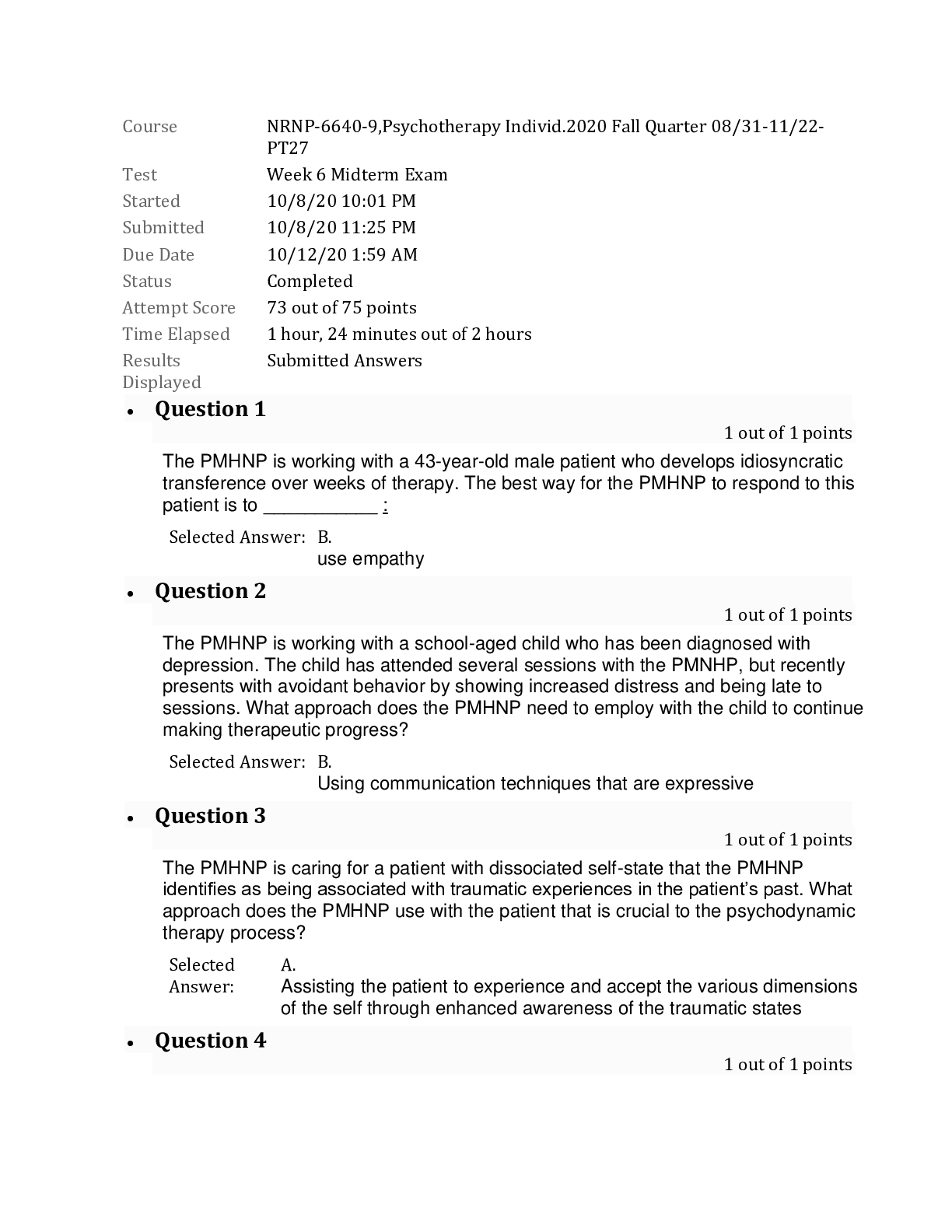
Buy this document to get the full access instantly
Instant Download Access after purchase
Add to cartInstant download
Reviews( 0 )
Document information
Connected school, study & course
About the document
Uploaded On
Dec 30, 2020
Number of pages
17
Written in
Additional information
This document has been written for:
Uploaded
Dec 30, 2020
Downloads
0
Views
31

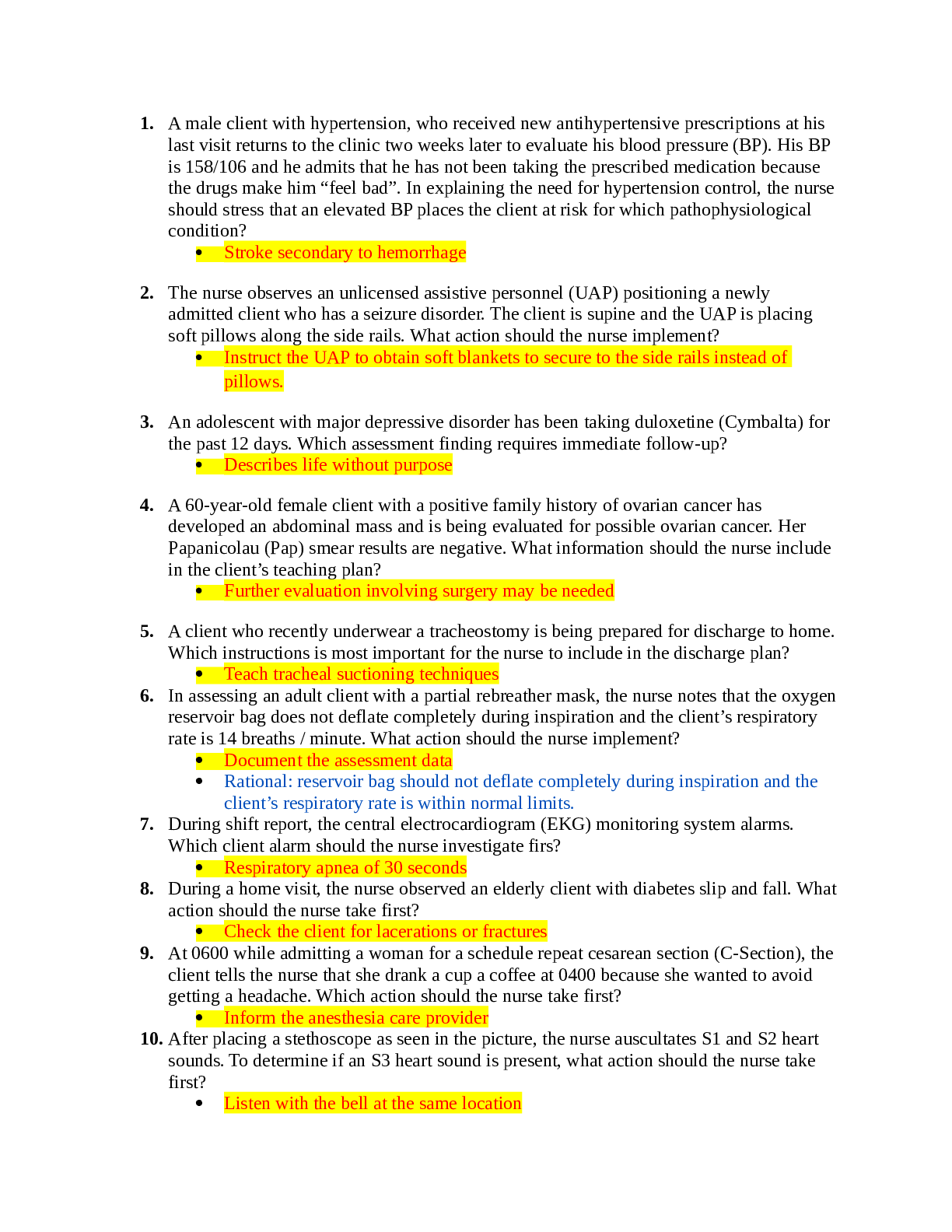

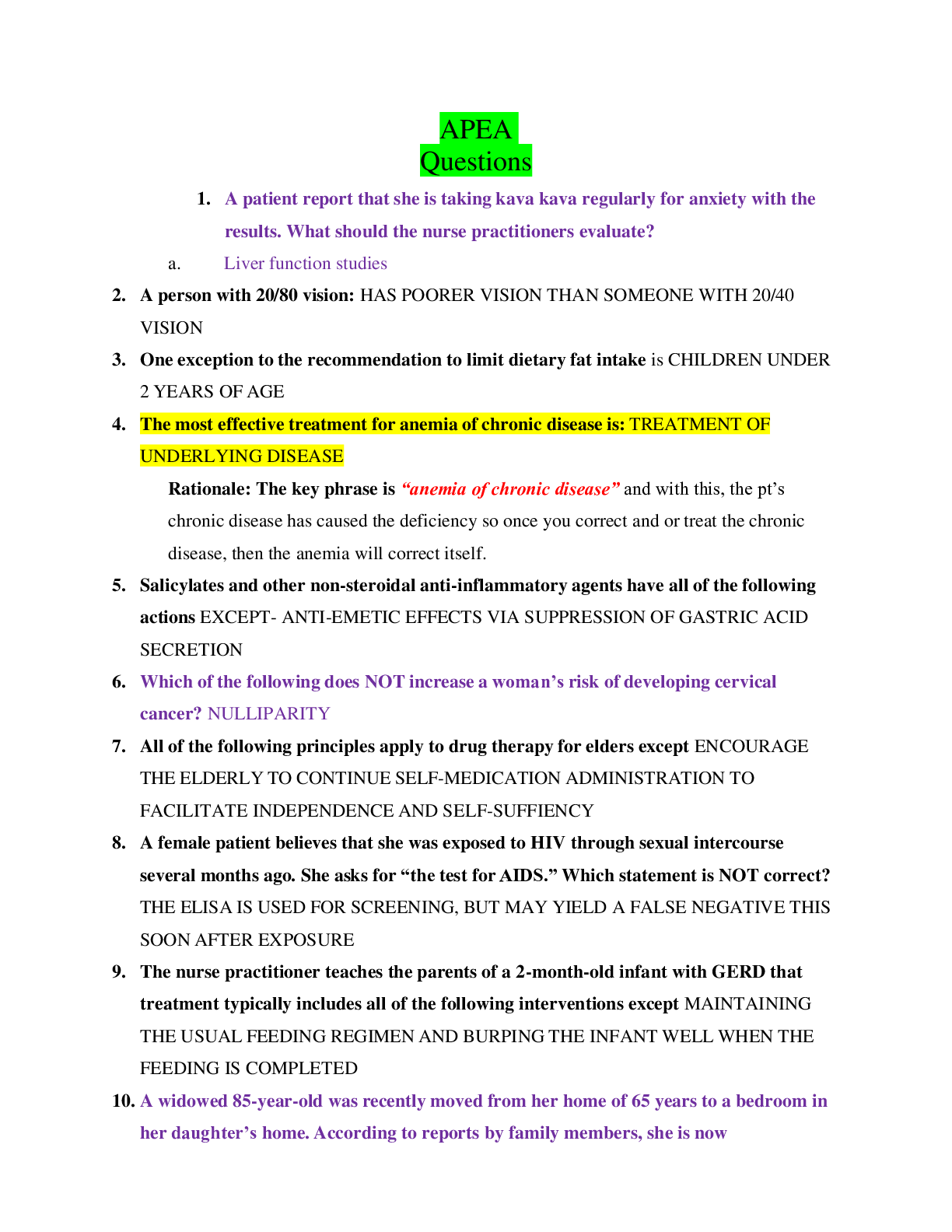


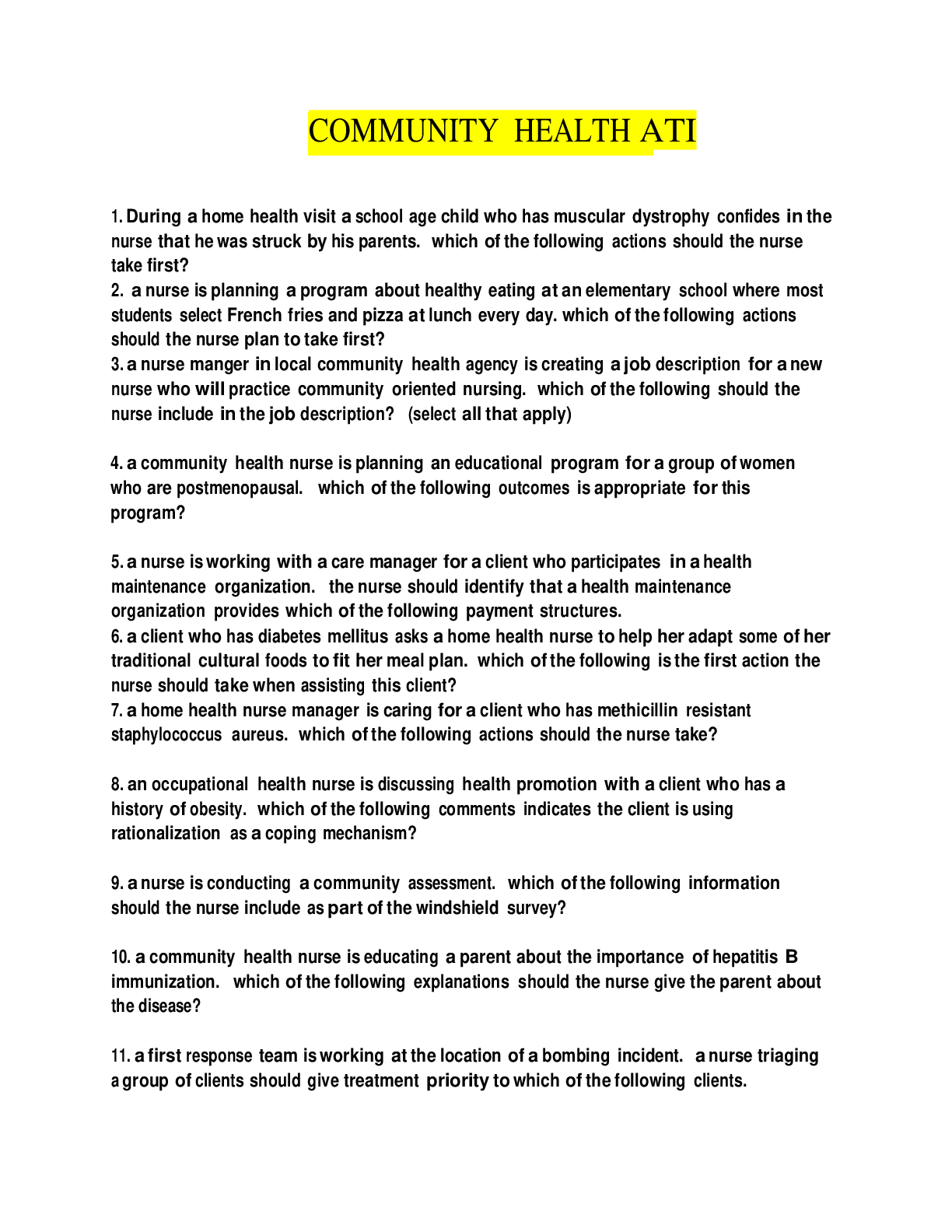
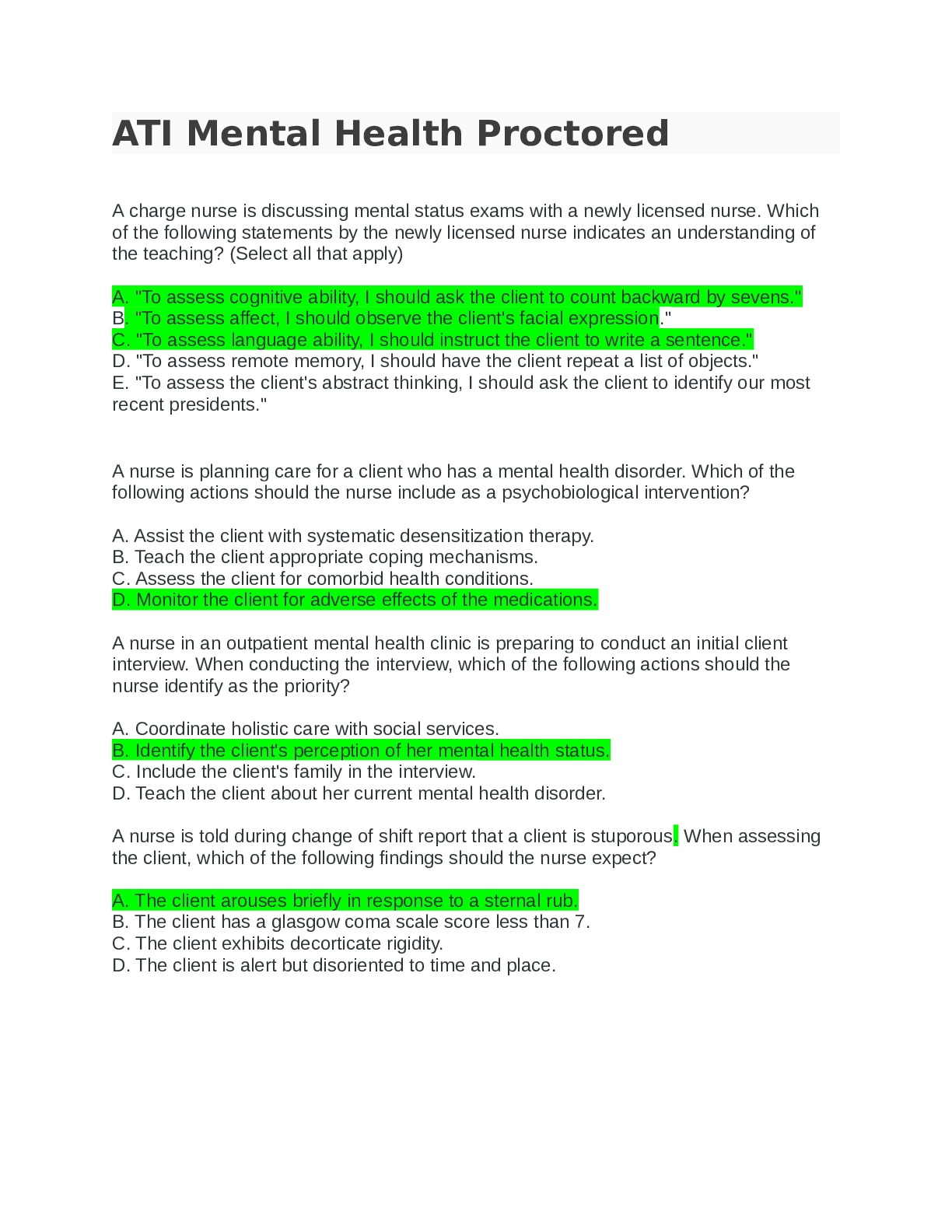
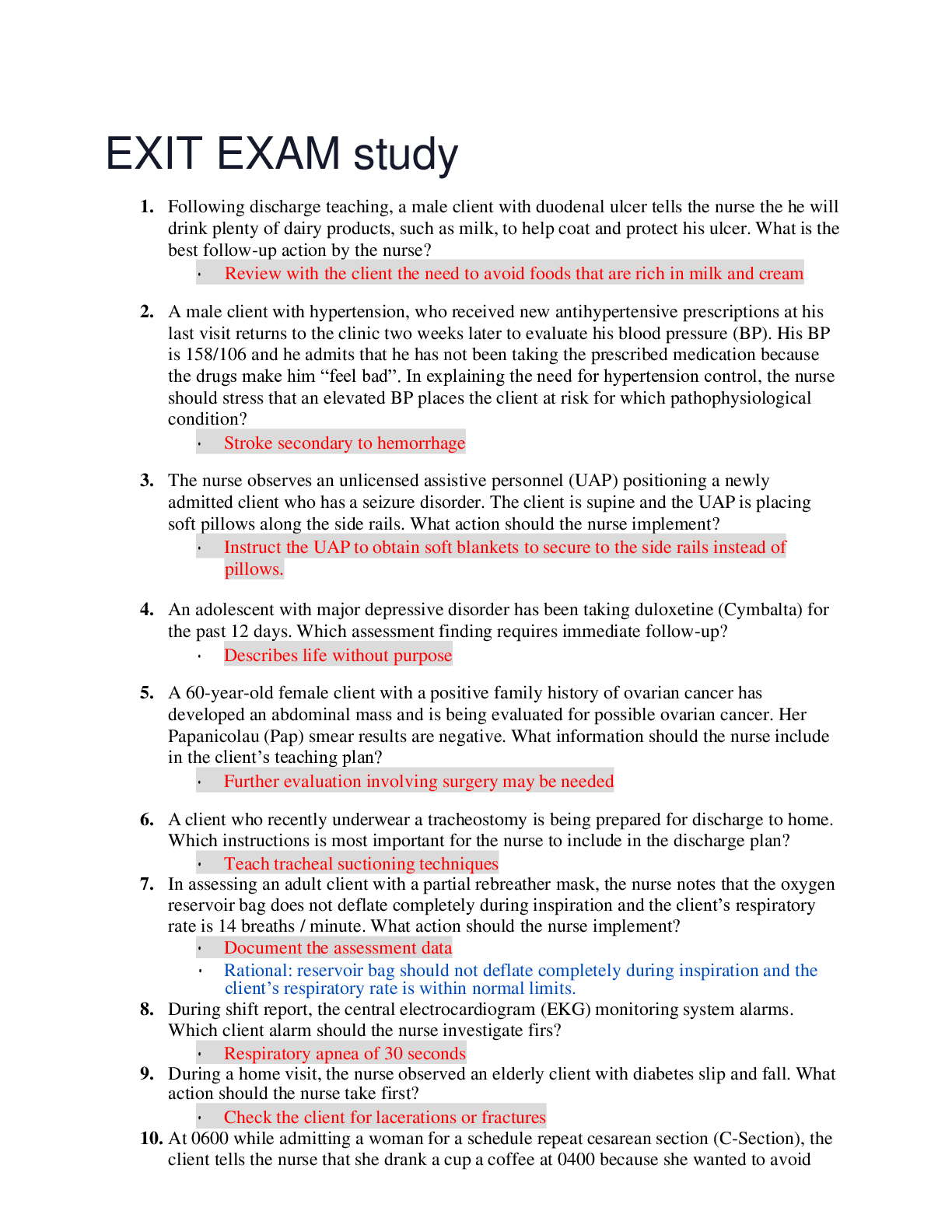
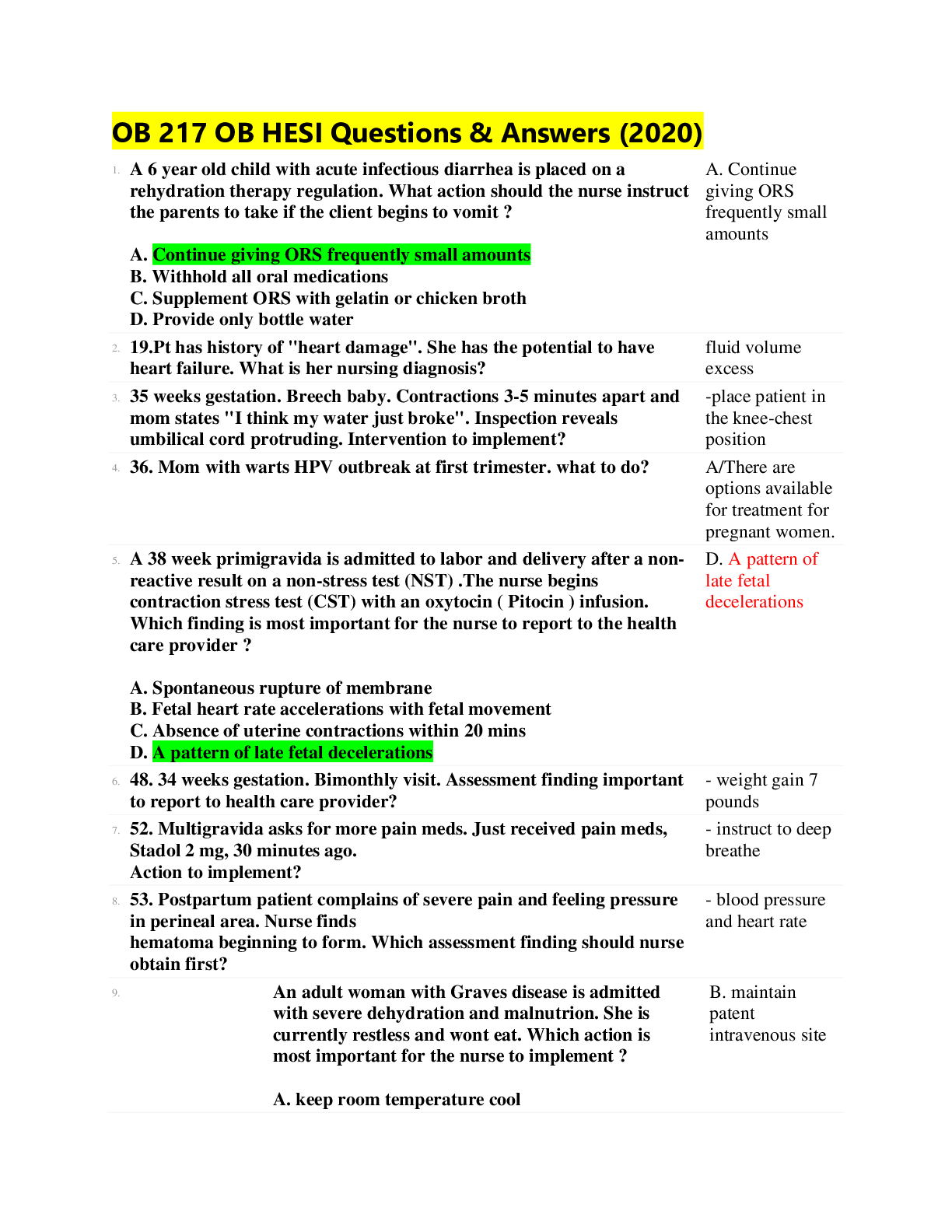
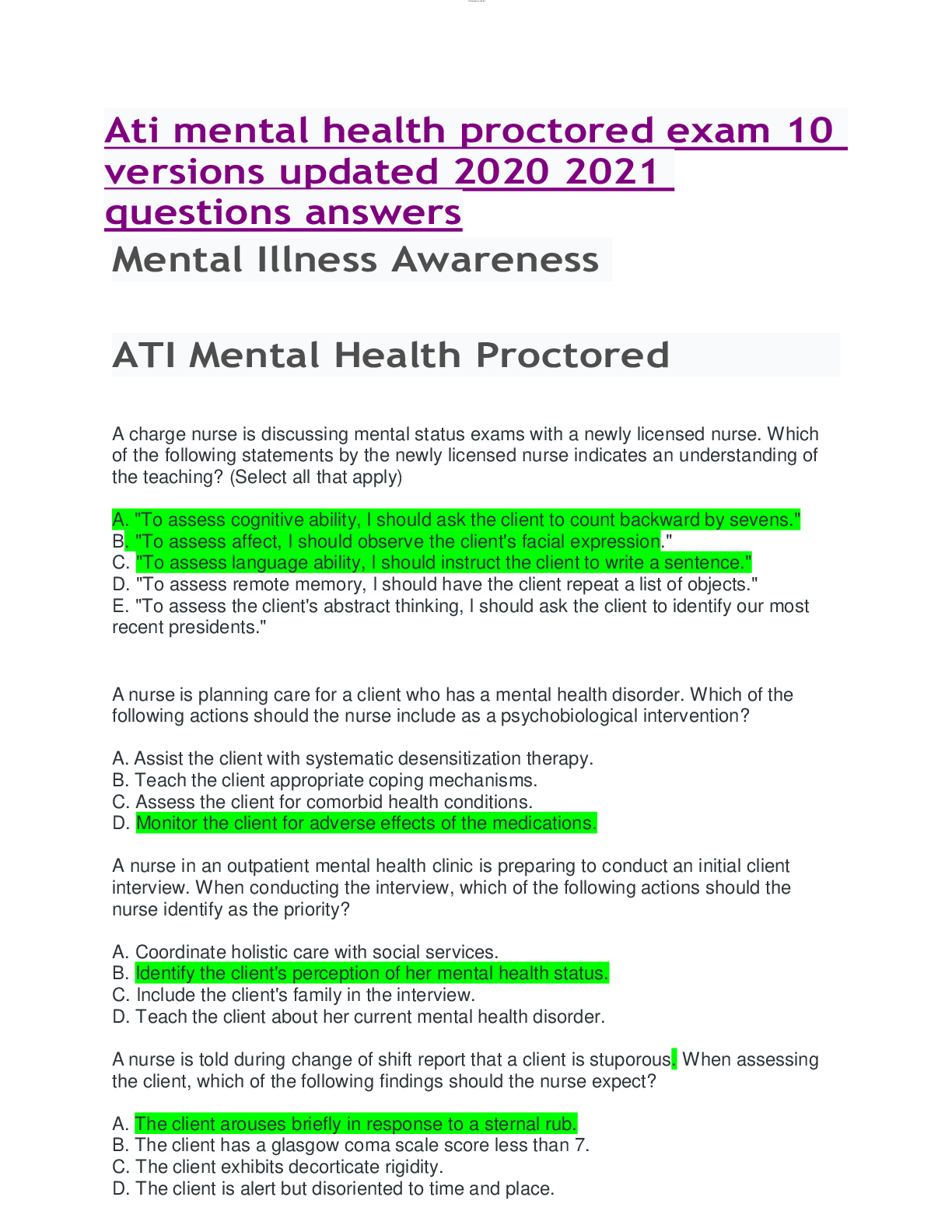
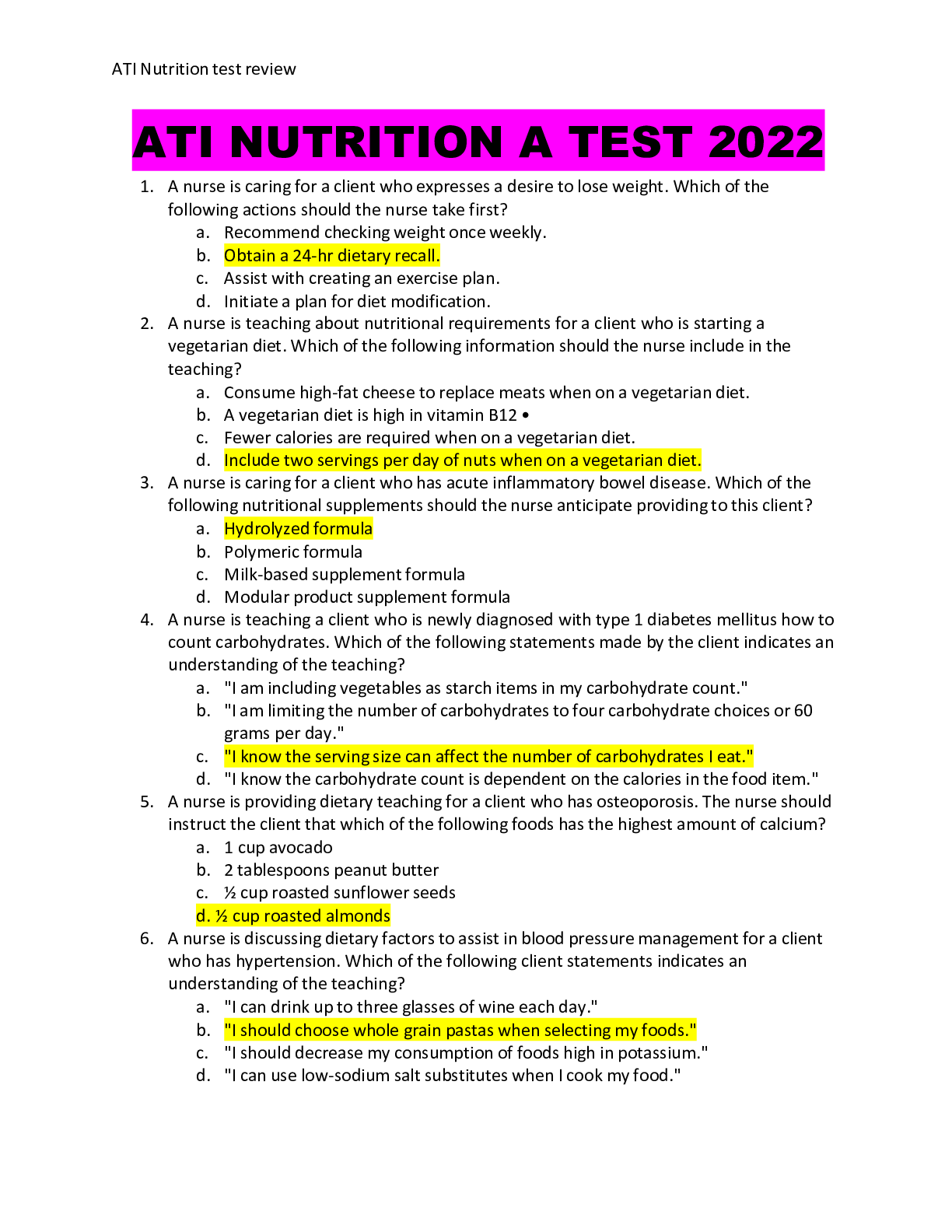
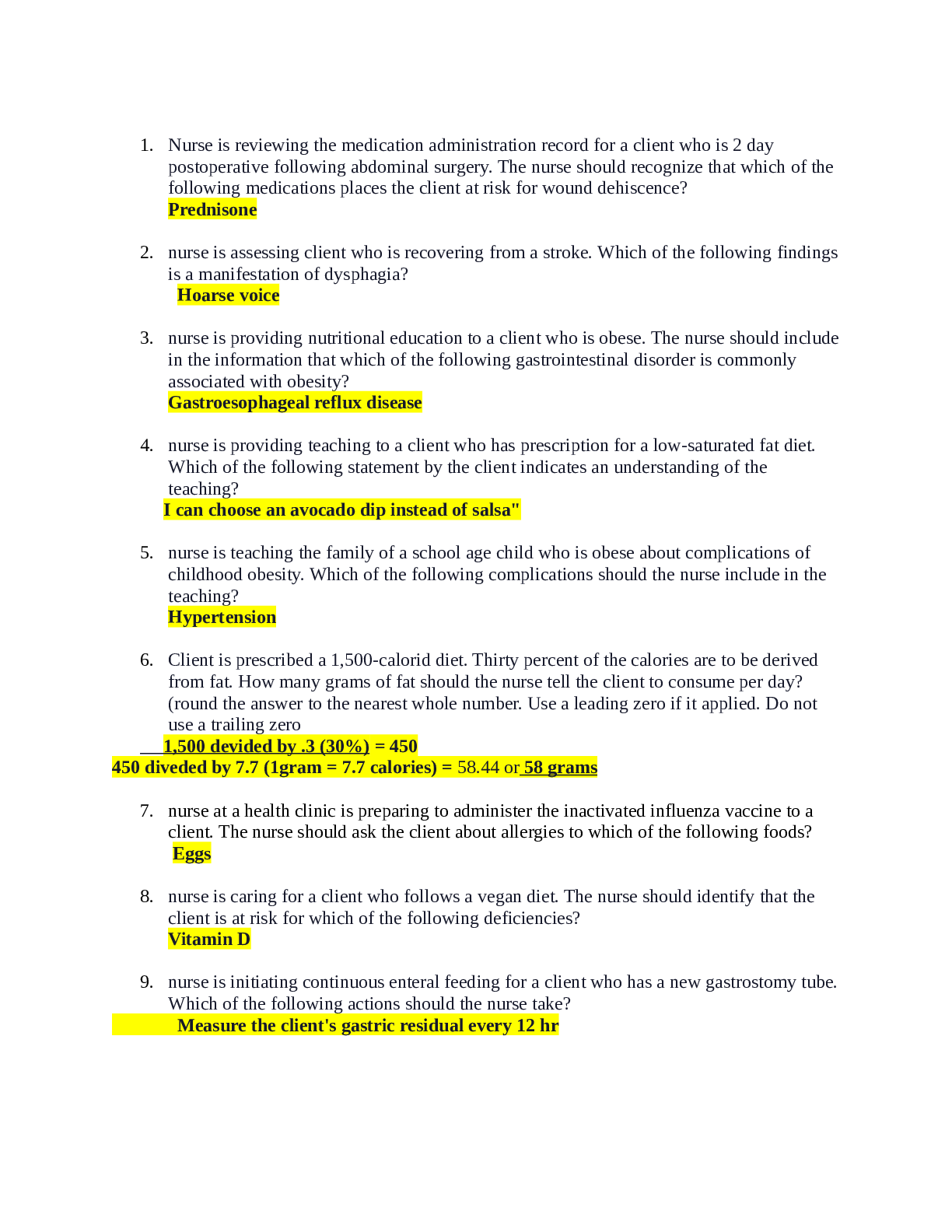




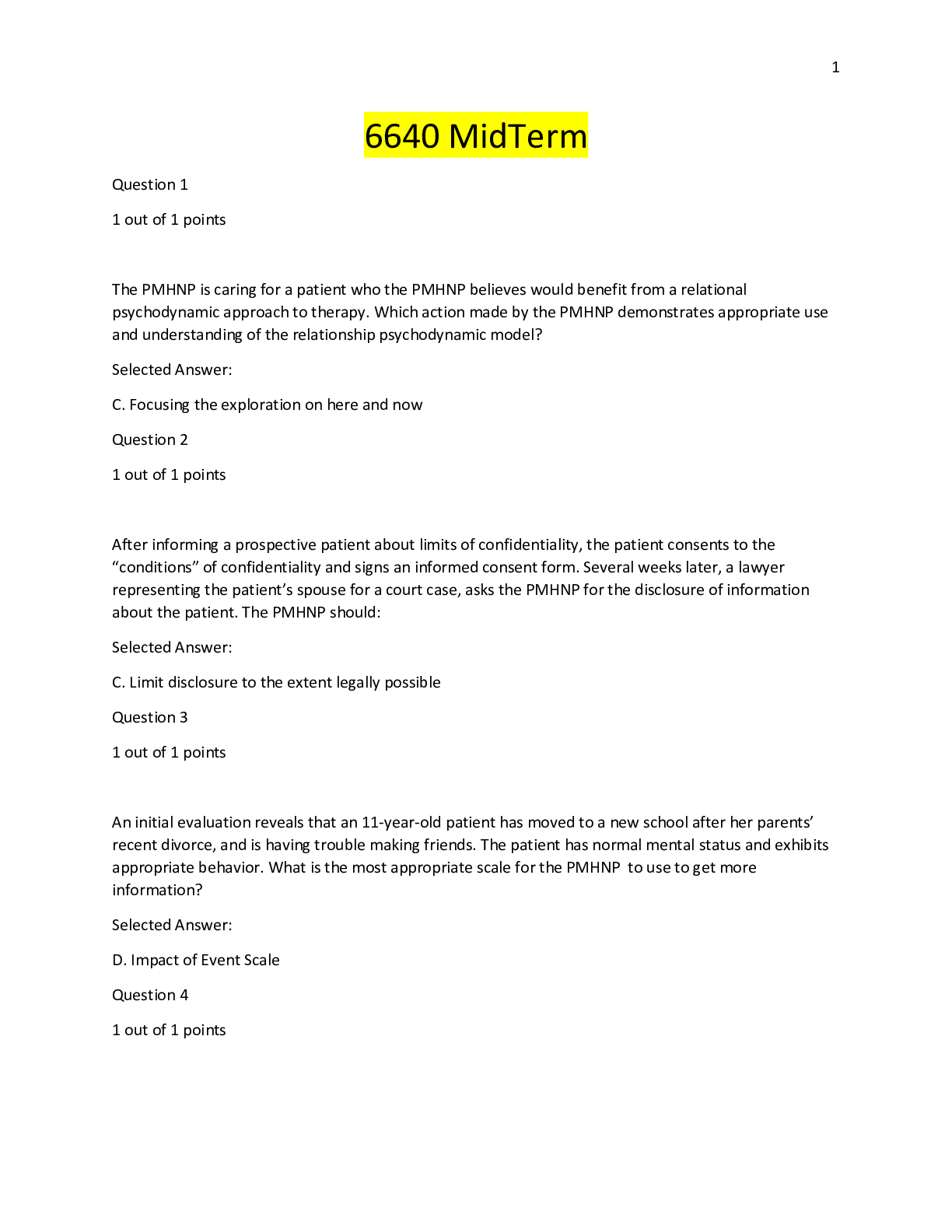

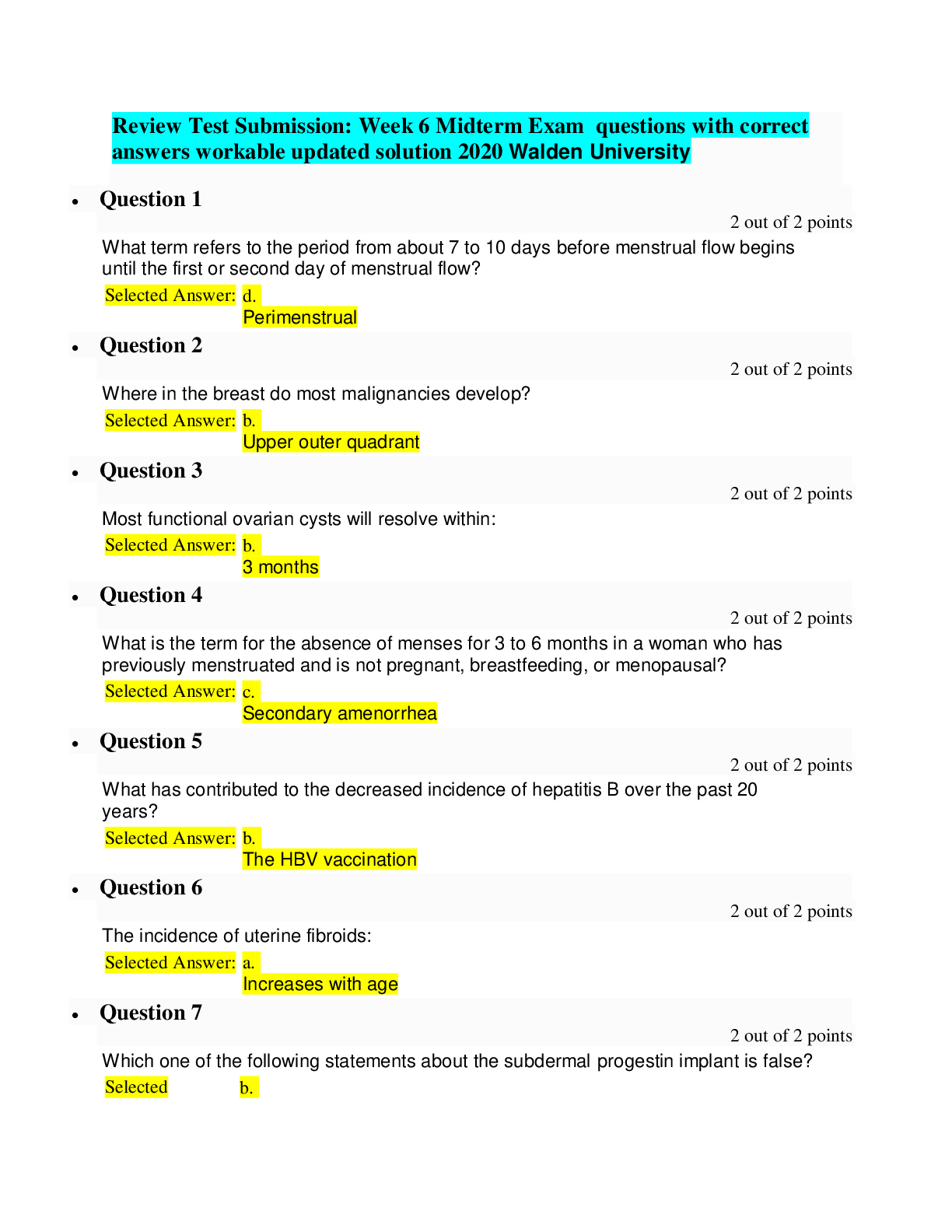

.png)

